📍 Introduction & Regional Overview
Nestled amidst the majestic peaks of the Karakoram, Himalaya, and Hindu Kush mountain ranges, Gilgit-Baltistan is a land of unparalleled natural beauty and a vibrant, diverse cultural tapestry. Often referred to as the “Roof of the World,” this autonomous territory in northern Pakistan is a melting pot of ancient traditions, captivating festivals, and a rich heritage shaped by its unique geography and the myriad communities that call it home. Gilgit-Baltistan culture is truly a jewel, reflecting centuries of history and unique community life.
The region is a mosaic of ethnic communities, each contributing to its rich cultural fabric. The Balti people, primarily residing in Baltistan, speak Balti, a Tibetic language. The Shins and Dards are found throughout Gilgit and Diamer districts, speaking Shina, an Indo-Aryan language. The Burushos, a fascinating isolated linguistic group, inhabit Hunza, Nagar, and parts of Gilgit. Other significant communities include the Yashkuns, Wakhi speakers (found in upper Hunza and Gojal), and Khowar speakers (in Ghizer and parts of Gilgit). This linguistic and ethnic diversity is a testament to Gilgit-Baltistan’s historical role as a crossroads of ancient trade routes and civilizations.
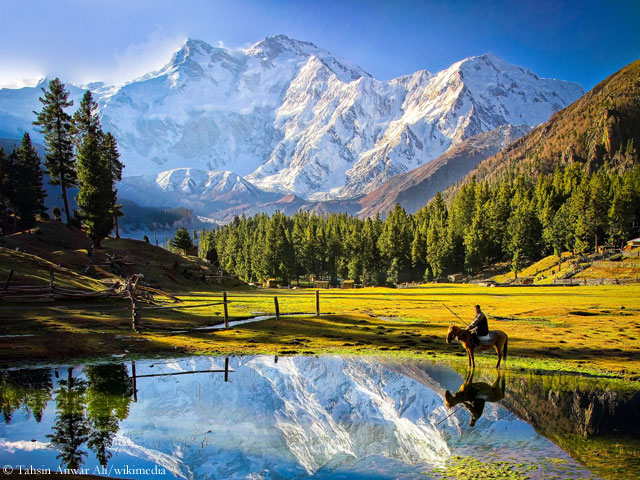
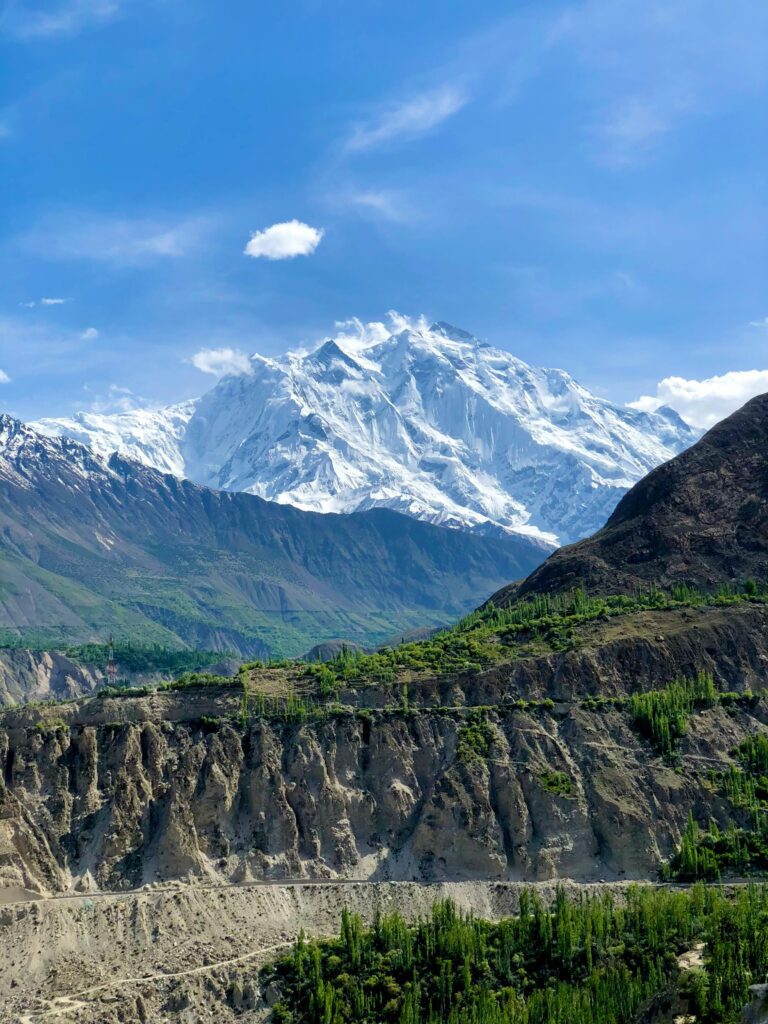
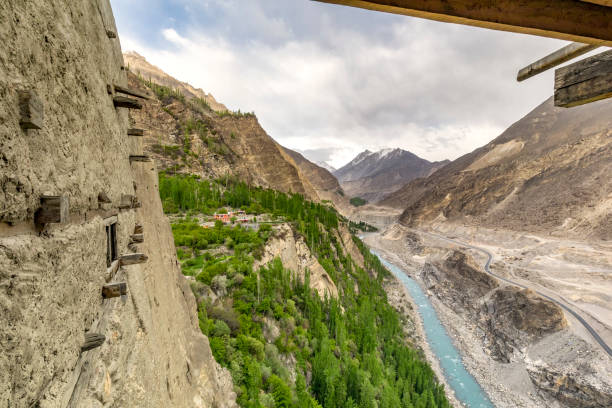
🎉 Festivals of Gilgit-Baltistan’s Rich Culture
The people of Gilgit-Baltistan celebrate life with an array of vibrant festivals that are deeply rooted in their history, agriculture, and spiritual beliefs. These gatherings offer more than just entertainment; they profoundly expressions of community spirit, artistic prowess, and enduring traditions.
🐎 Shandur Polo Festival
Known as the “Roof of the World Festival,” the Shandur Polo Festival is perhaps the most famous and exhilarating event in Gilgit-Baltistan. Held annually from July 7th to 9th on the world’s highest polo ground (Shandur Pass, at an altitude of 3,700 meters or 12,200 feet), this festival showcases a fierce, traditional polo match between the teams of Gilgit and Chitral. This free-style polo, known for its raw intensity and fewer strict rules, dates back centuries. It offers a thrilling spectacle. Beyond the main match, the festival is a vibrant showcase of local culture, featuring traditional music, energetic dances performed by local artists, and a lively atmosphere with temporary tent cities and bonfires under the starry Himalayan sky. The polo ground itself is a vast, flat expanse, an extraordinary setting for such a historic sport.
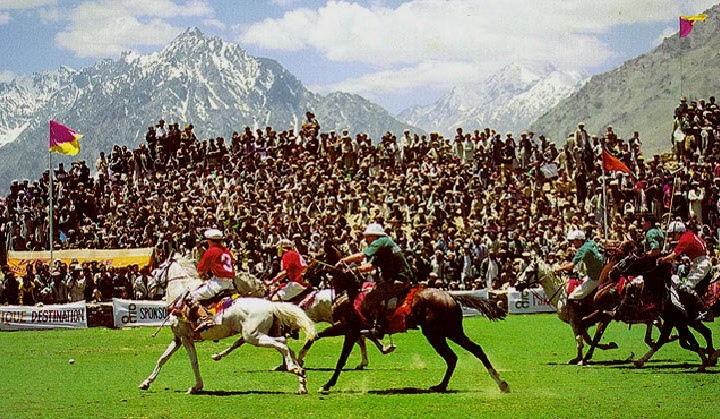
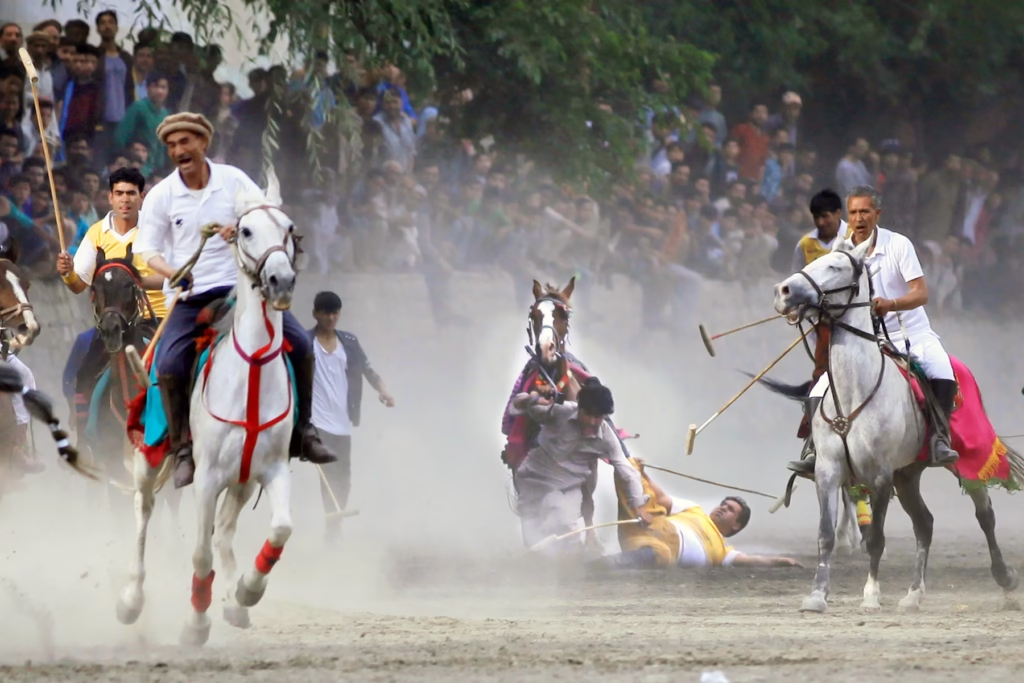
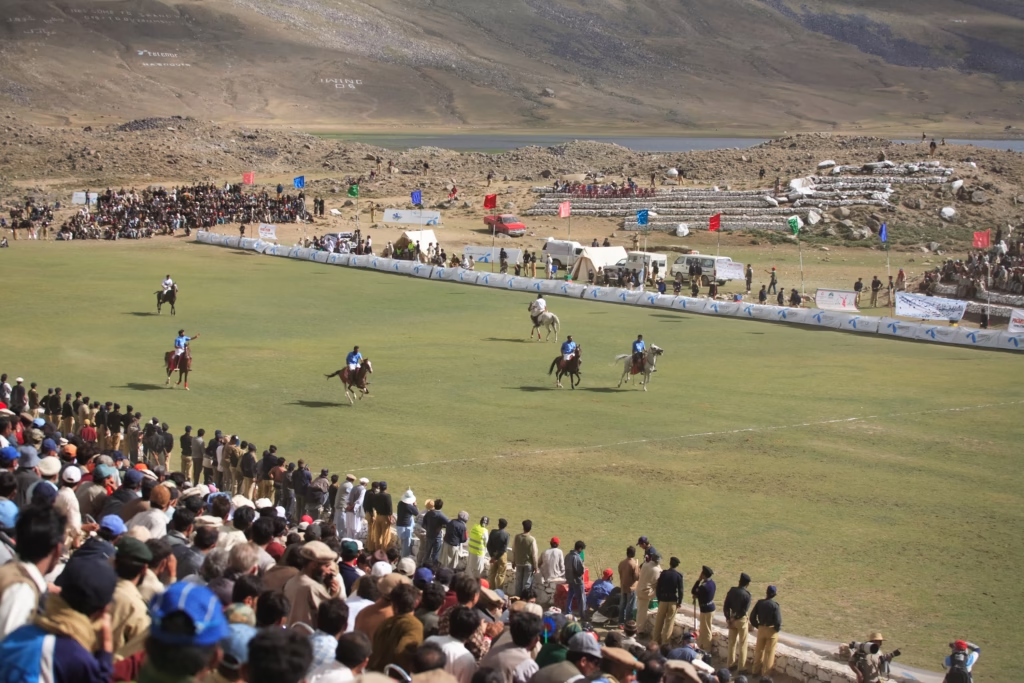
🌿 Takhum Rezi / Bo or Bee Ganik (Spring Festival) in Ghizer: Celebrating Life
Celebrated in the Ghizer district, Takhum Rezi, also known as Bo or Bee Ganik, marks the arrival of spring and the beginning of the sowing season. This ancient festival is a joyous occasion that combines rituals for agricultural prosperity with lively community gatherings. Key traditions include torch-bearing processions that purify the land. Additionally, traditional dances and spirited horse races occur.The sowing rituals, often involving the scattering of seeds, symbolize hope for a bountiful harvest.
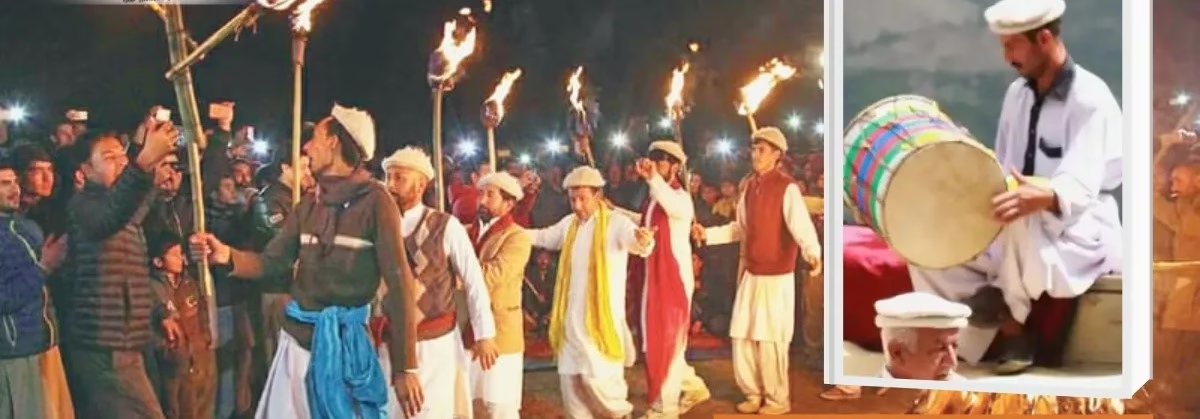
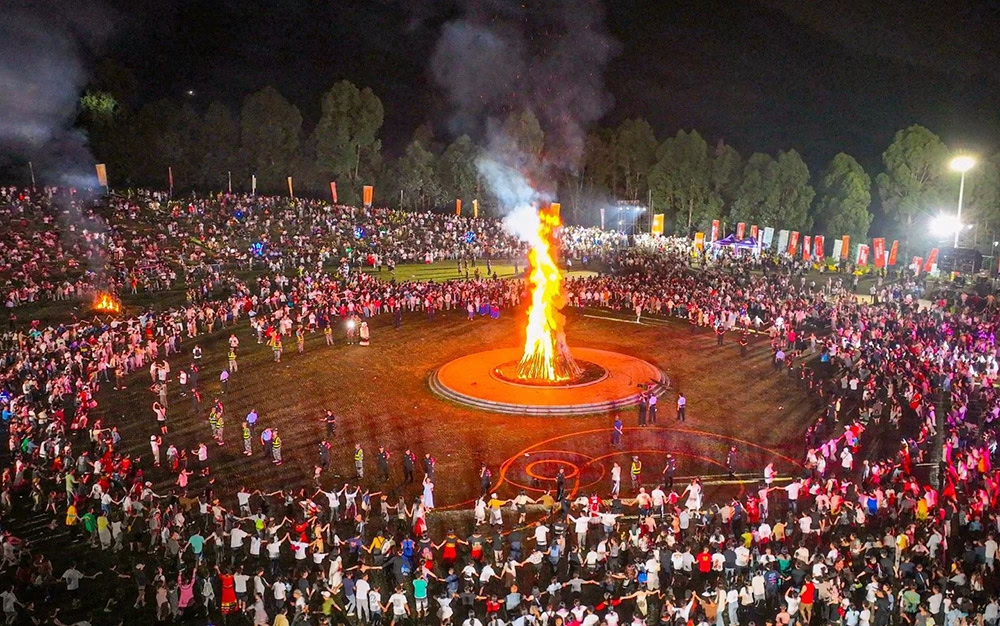
🌾 Ginani (Harvest Festival)
The Ginani Festival is primarily celebrated around June 21st in the Hunza region, marking the summer solstice and the beginning of the harvest season, particularly of wheat and barley. It’s a thanksgiving festival where communities offer prayers for a good harvest and prosperity. The celebrations are filled with traditional food, including local dishes made from fresh produce, lively music, and folk dances. It’s a time for communal feasting and expressing gratitude for nature’s bounty.
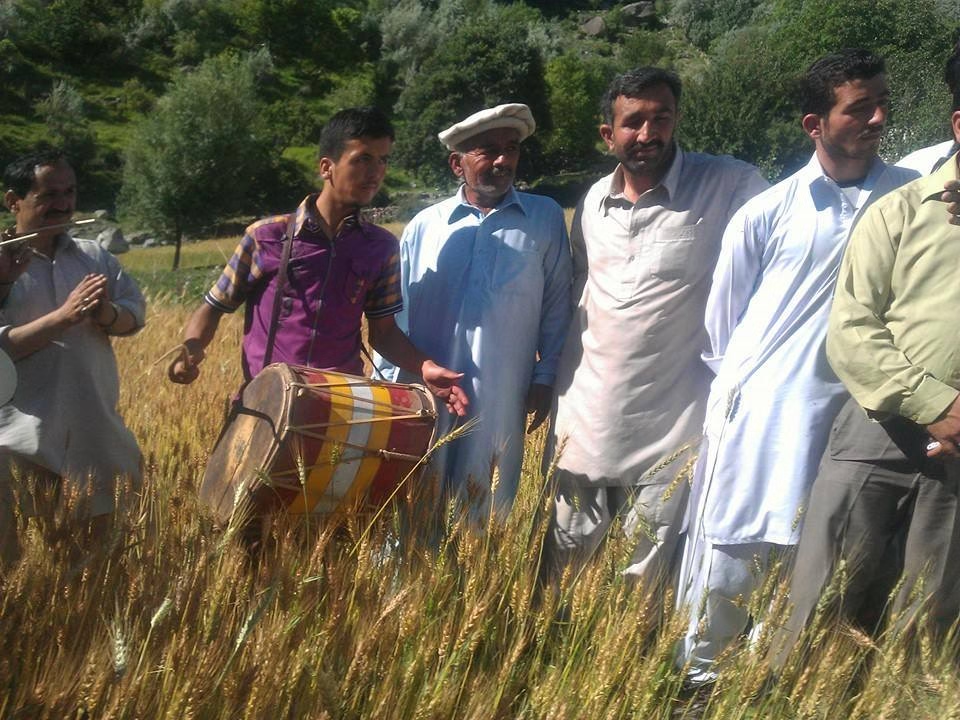
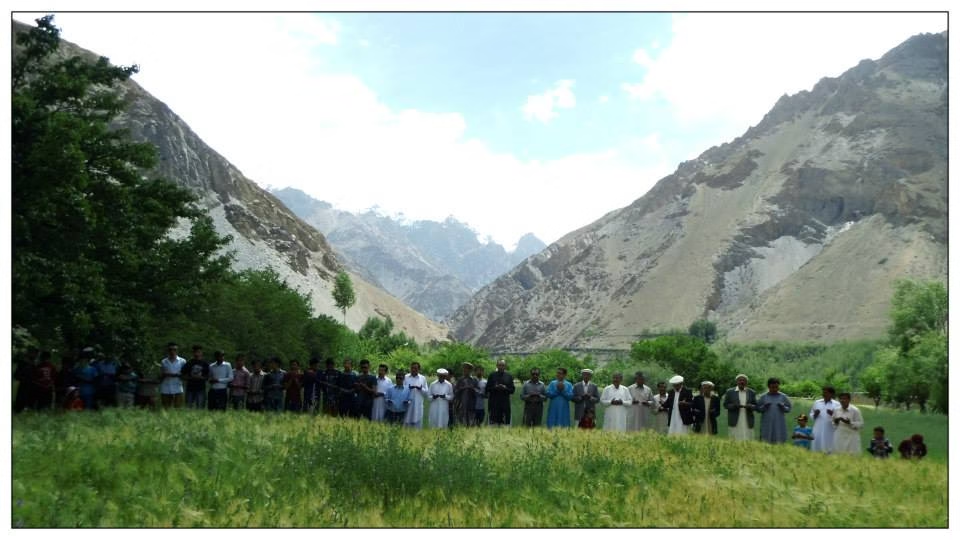
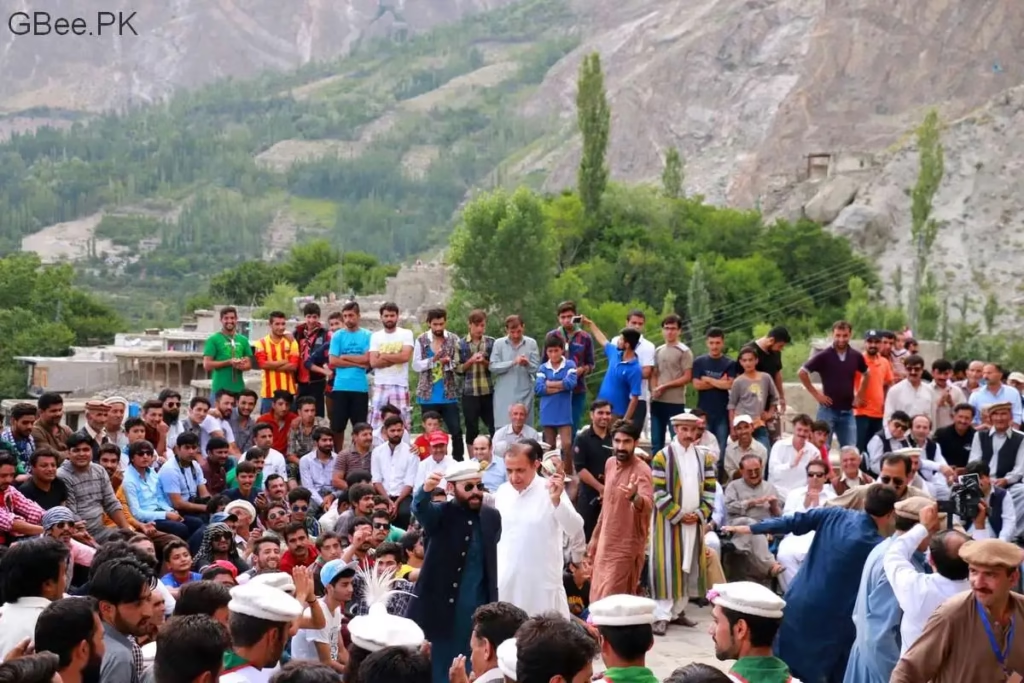
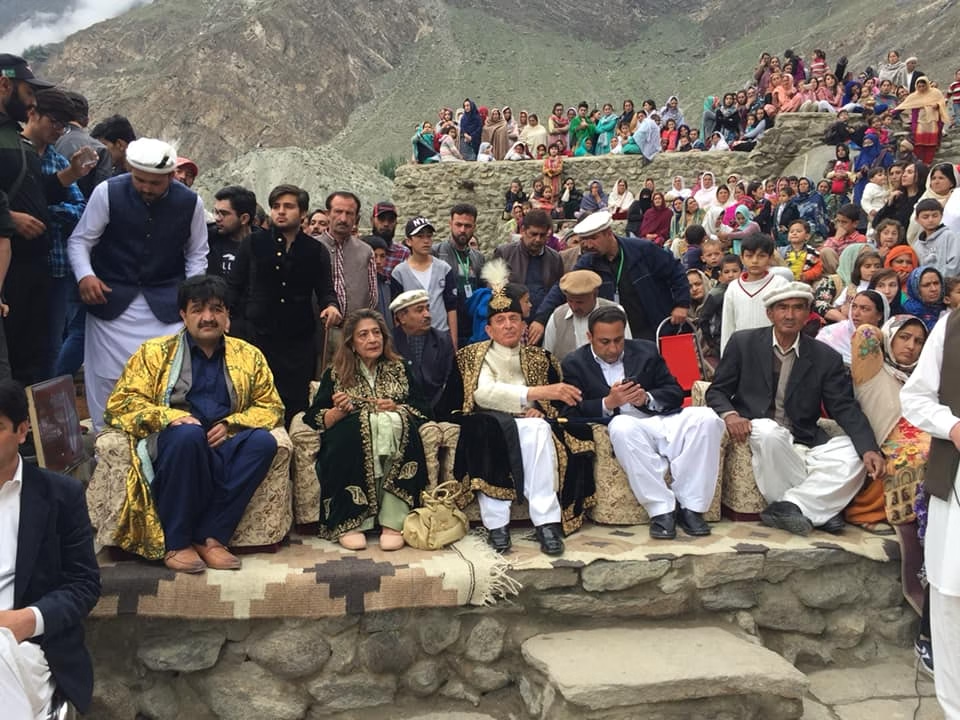
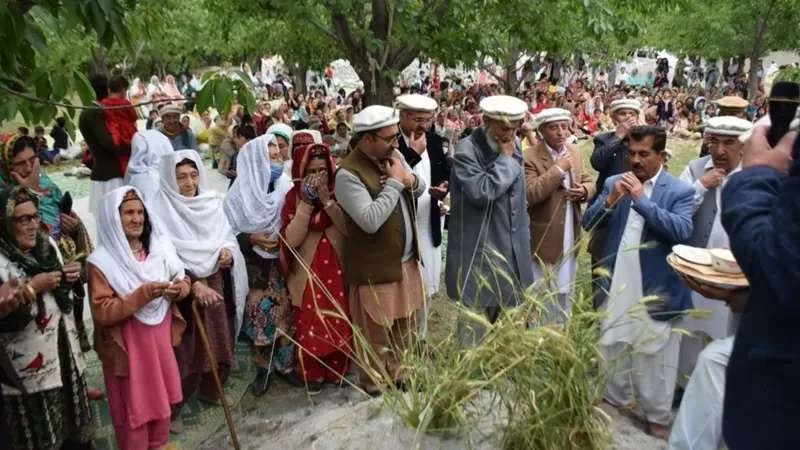
❄️ Mayfung (Balti New Year/Winter Festival)
Celebrated around December 21st in Baltistan, Mayfung marks the Balti New Year and the winter solstice. This festival is deeply rooted in ancient Buddhist traditions of the region, symbolizing the triumph of light over darkness and welcoming longer days. Key rituals include lighting torches and lanterns, communal fire dances, and gathering for festive meals. Moreover, it fosters community bonding, warmth, and hope during the harsh winter months.
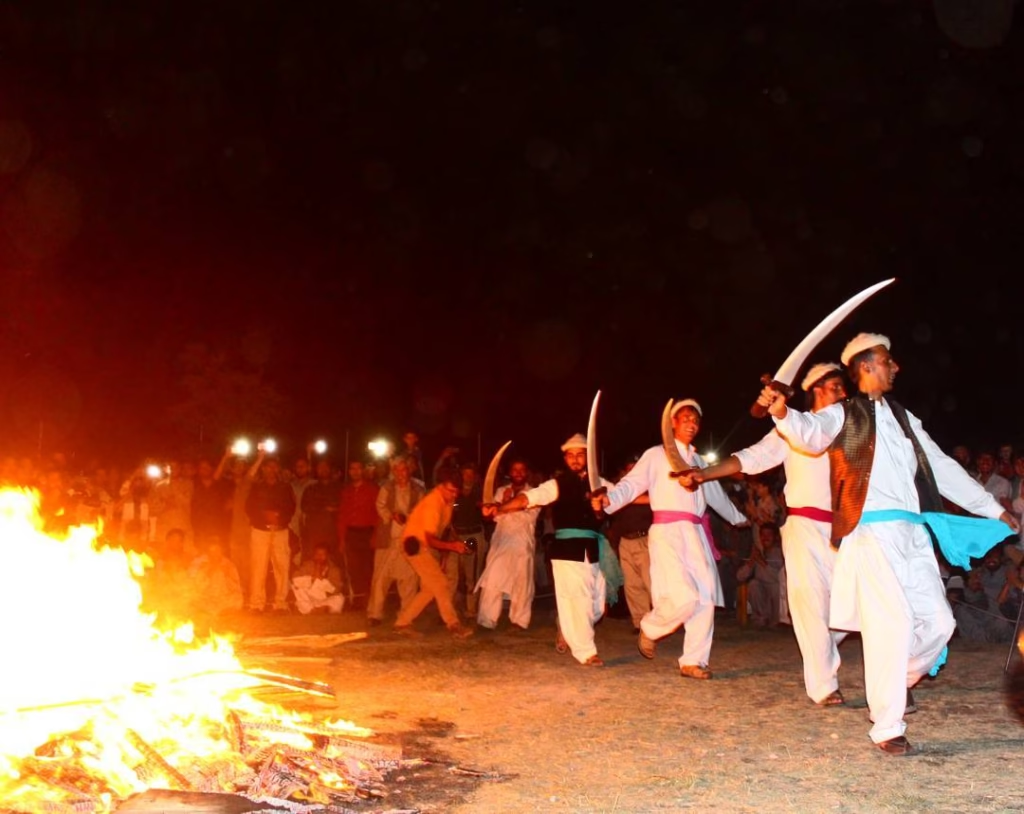
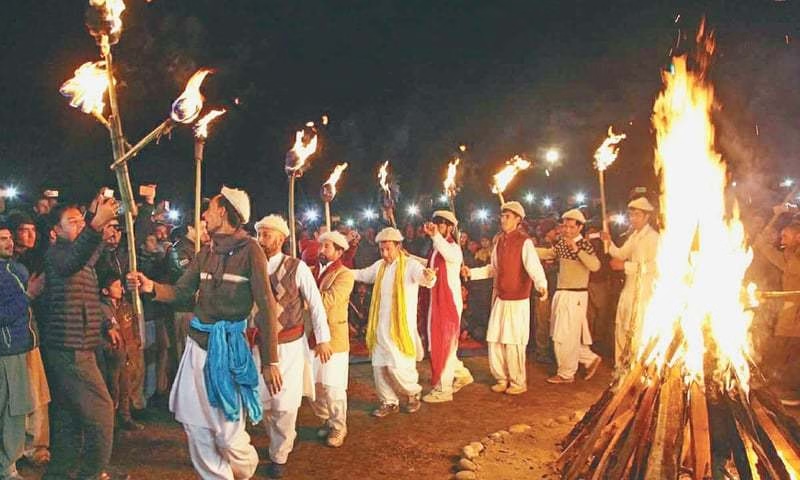
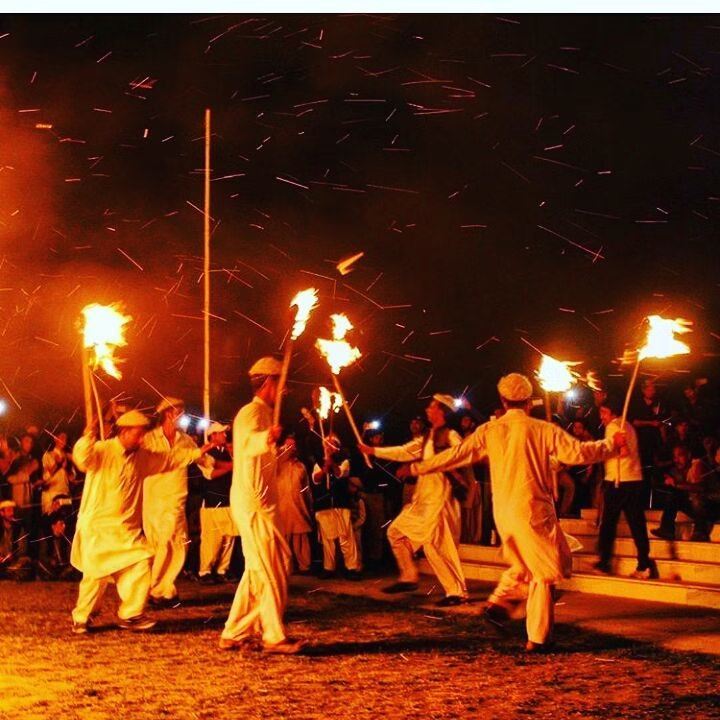
🥩 Nasalo (Winter Meat-Preparation Tradition)
A unique winter tradition, Nasalo typically takes place in late November or December, primarily in the Baltistan region. It involves the communal slaughtering and preservation of meat for the long winter months. Villagers gather around bonfires, sharing stories and food, as the meat is processed and prepared for drying or freezing. This tradition fosters a strong communal spirit and ensures food security during the snow-bound season. The dried sausages, known as warkì or ghittey, are a direct product of this tradition.
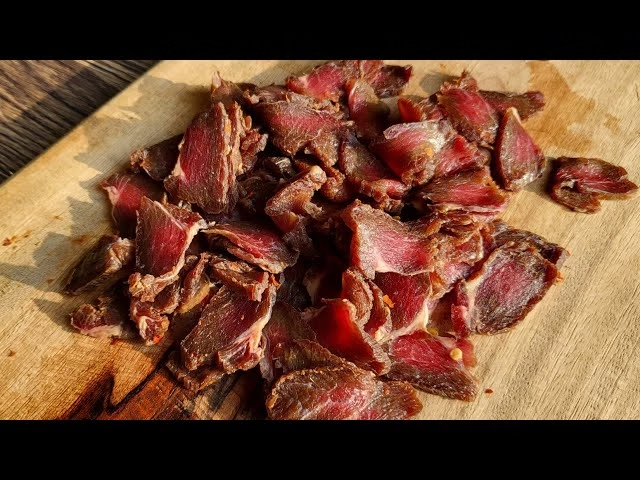
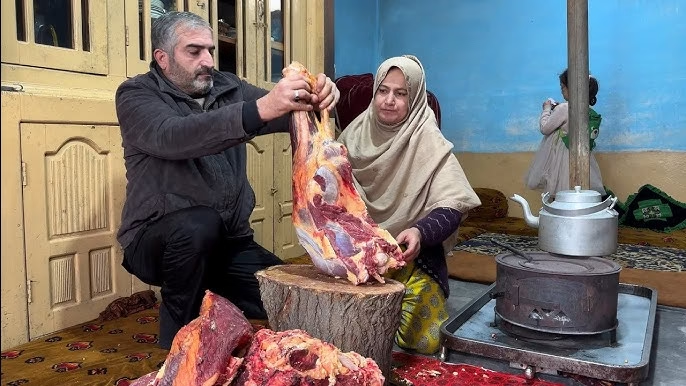
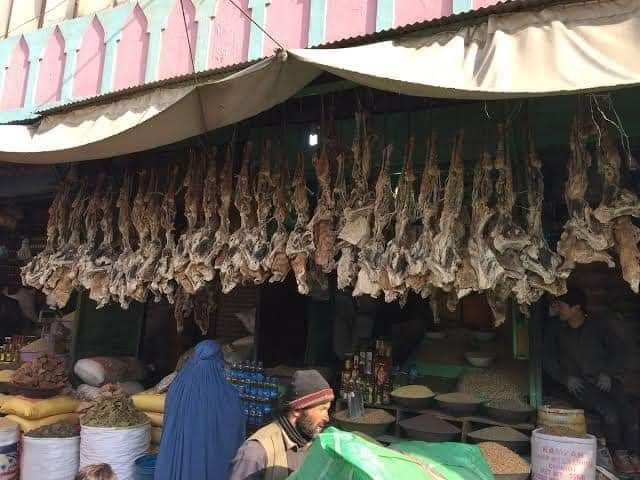
🏞️ Other Festivals: Babusar Polo Festival & Rama Celebrations
Beyond these, other regional festivals contribute to Gilgit-Baltistan’s vibrant calendar. The Babusar Polo Festival is held in the picturesque Astore region, near the iconic Babusar Pass. Similar to Shandur, it showcases local polo talent but on a slightly smaller scale, often accompanied by cultural shows and tourism events that highlight the natural beauty of Astore. Rama, a scenic valley in Astore, also hosts various cultural and tourism events throughout the year, celebrating its local heritage and attracting visitors. (Source: App.com.pk, Pakistan Tour And Travel, paktrips.com)
👗 Traditional Fashion & Clothing: A Reflection of Gilgit-Baltistan Culture
The traditional attire of Gilgit-Baltistan is a beautiful reflection of the region’s climate, cultural identity, and artistic craftsmanship. Made predominantly from wool, these garments are designed for warmth and comfort in the mountainous terrain.
👨🦰 Men’s Attire: Iconic Caps and Robes
The traditional men’s attire often consists of a shalwar-kameez paired with a woollen waistcoat. A distinctive element is the choga robe, a thick, often embroidered, full-length woollen overcoat worn for warmth and ceremonial occasions. The most iconic part of men’s fashion is the traditional woollen cap, known by various names such as Khoi, Phartsun, Pharsen, Sekeed, or Nating. This cap is typically round with a rolled-up brim, often in shades of white, brown, or grey. A unique feature of these caps, especially for special occasions, is the inclusion of a plume or feather, historically a mark of distinction or bravery.
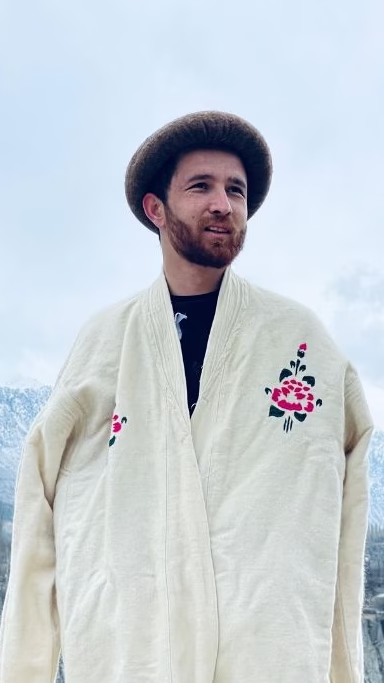
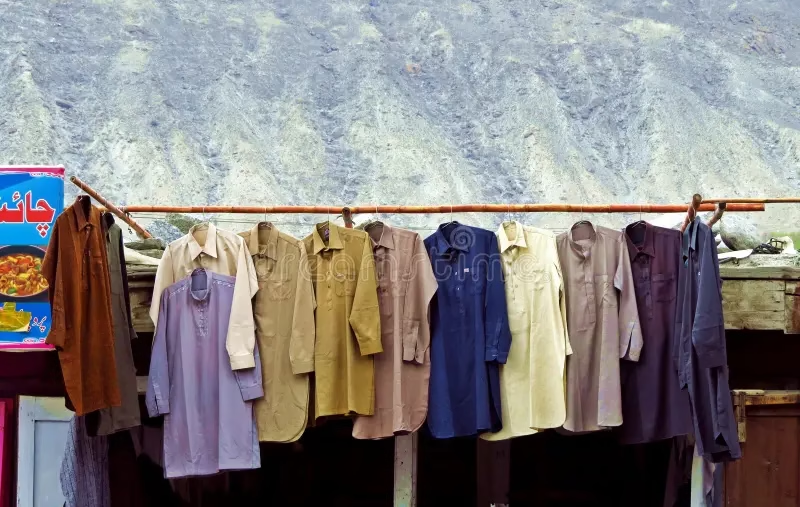
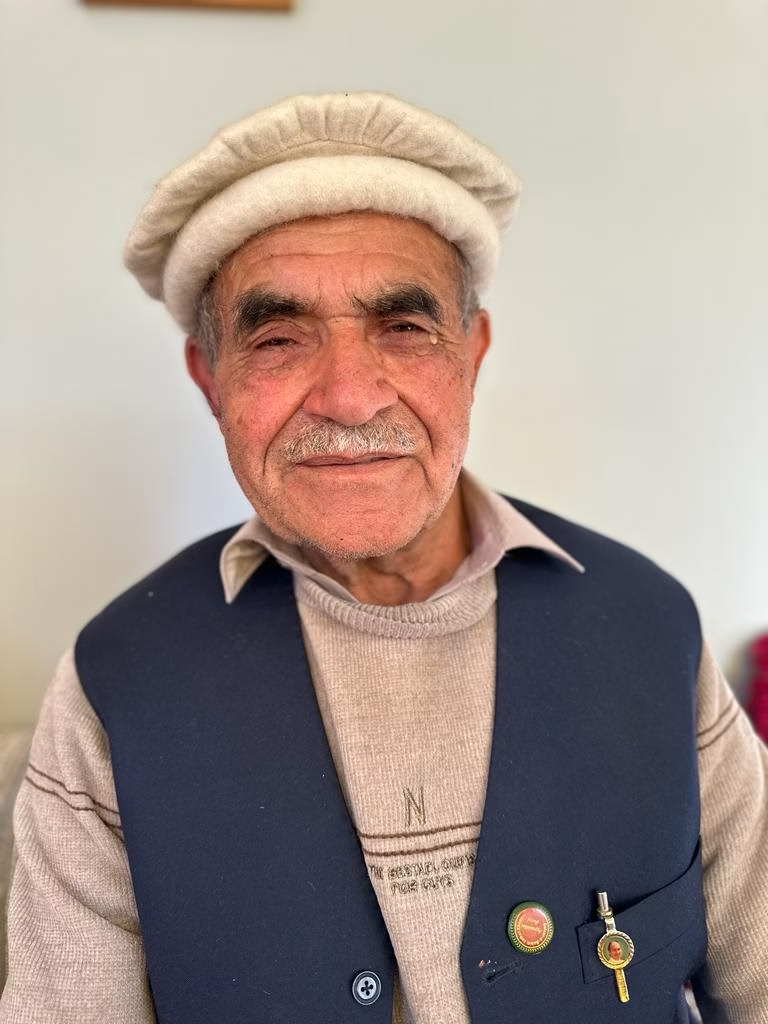
👩🦱 Women’s Clothing: Embroidered Elegance
Women’s traditional clothing typically includes loose shalwar-kameez or flowing gowns, designed for comfort and modesty. These garments are often made from vibrant fabrics and adorned with intricate, colorful embroidery, showcasing geometric patterns, floral motifs, and local symbols. A key accessory is the elaborately embroidered cap called Iraghi, often worn with traditional silsila jewelry that drapes elegantly. Women also commonly wear traditional shawls or dupattas over their heads or shoulders, adding another layer of color and warmth.
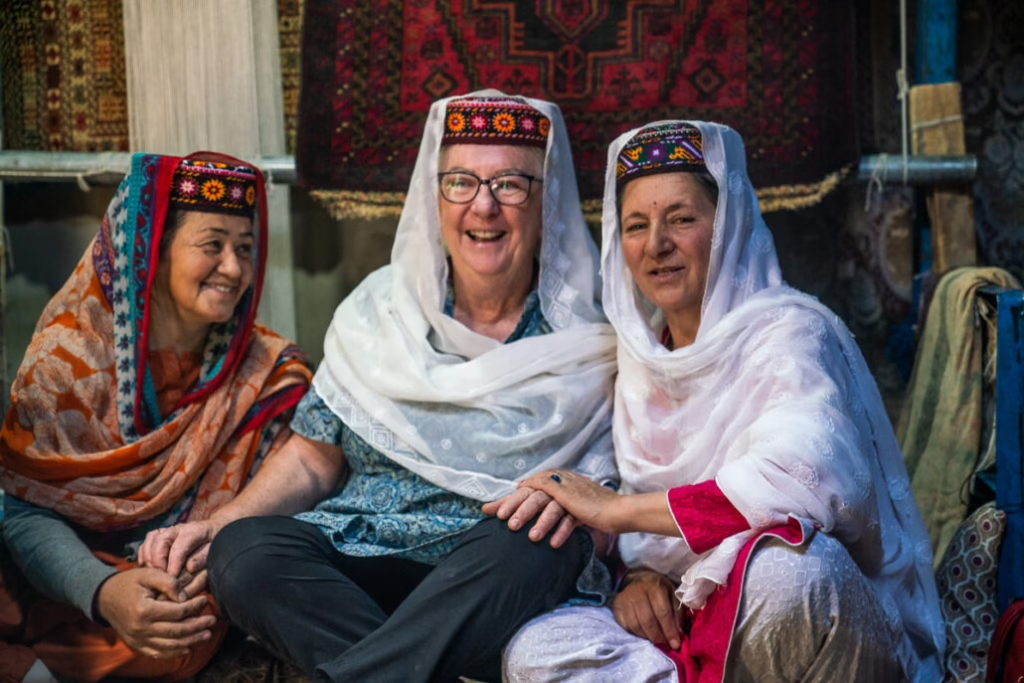
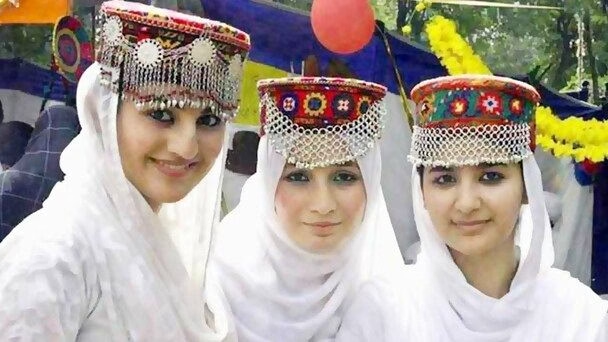
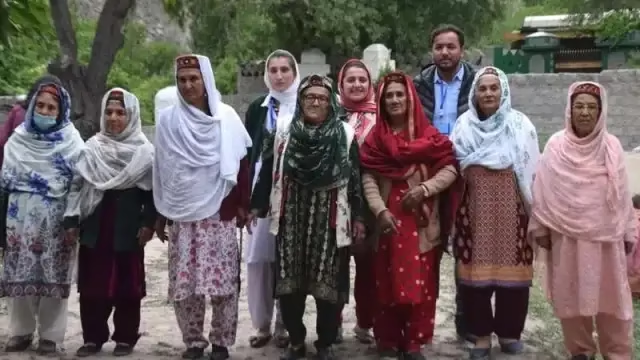
💎 Jewelry and Accessories
Both men and women adorn themselves with traditional jewelry and accessories, reflecting the natural bounty of the region. Popular materials include silver, turquoise, and coral beads, often crafted into necklaces, earrings, bracelets, and rings. These pieces are not just decorative but often carry cultural significance, passed down through generations.
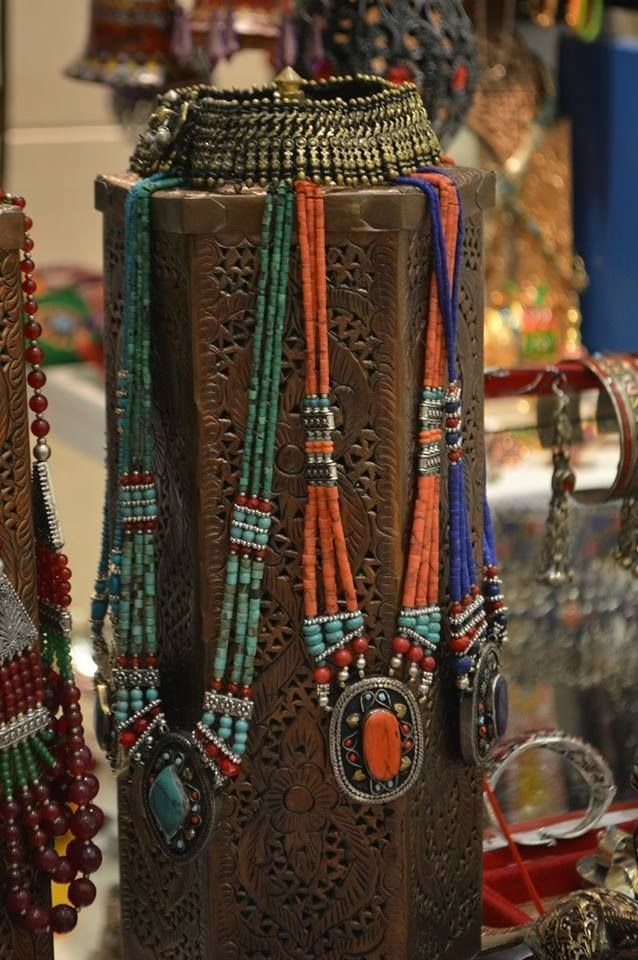
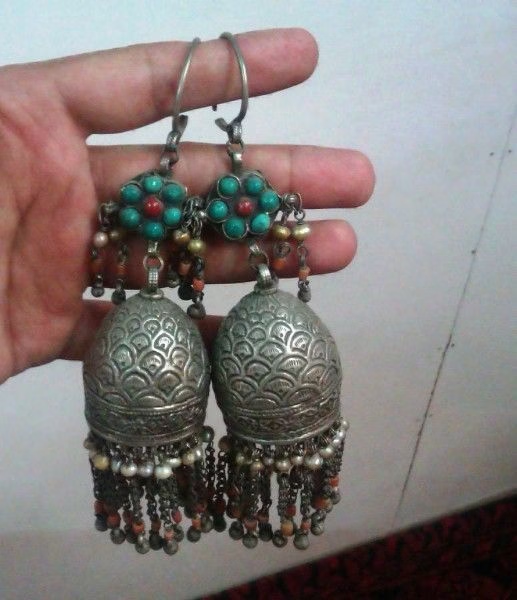
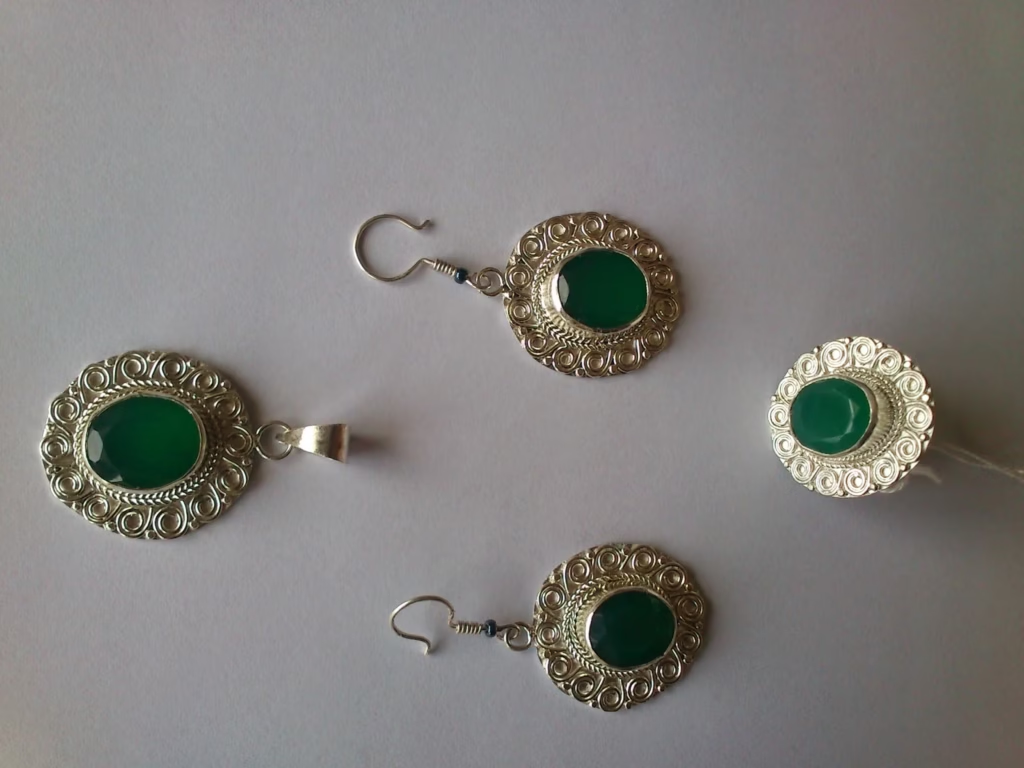
🎨 Crafts, Music & Dance Traditions: The Artistry of Gilgit-Baltistan Culture
The artistic soul of Gilgit-Baltistan is expressed through its intricate crafts, soulful music, and energetic dance forms.
🧵 Arts & Crafts
The region boasts a rich tradition of handicrafts. Hand-woven carpets with intricate designs, often featuring geometric and floral patterns, are a testament to the weavers’ skill. Woodwork carving is prominent, seen in architectural details, household items, and decorative pieces. Basketry, crafted from local willow and other natural fibers, is both utilitarian and artistic. Woollen textiles are widely produced, with skills in spinning, weaving, and dyeing passed down through generations. The vibrant embroidery on clothing and household items showcases a meticulous attention to detail and a mastery of color.
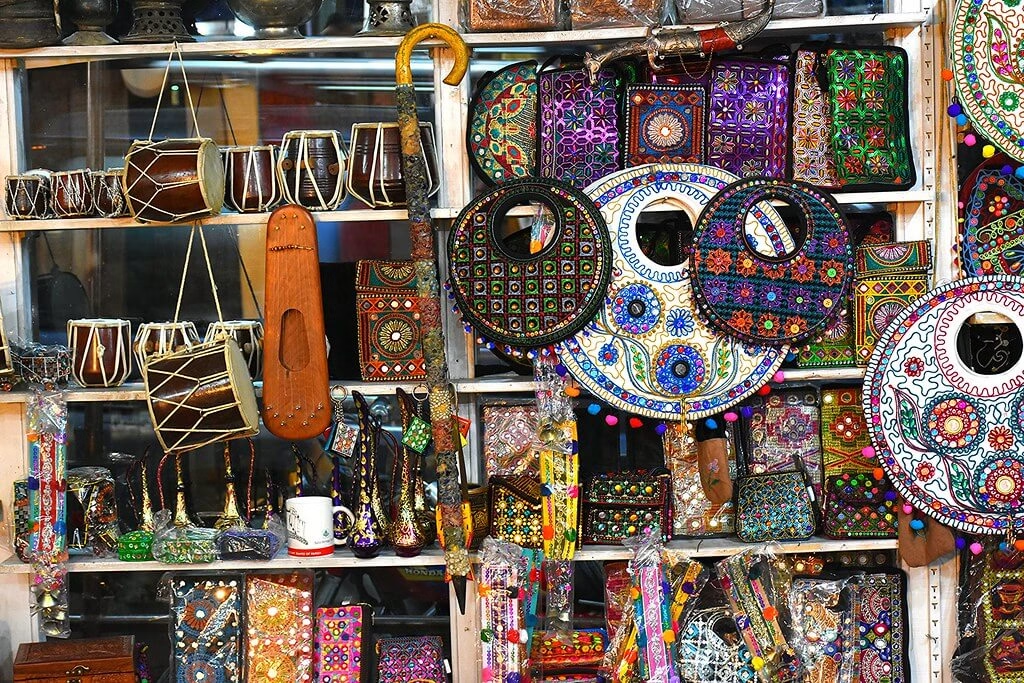
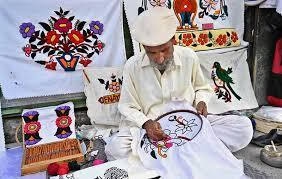
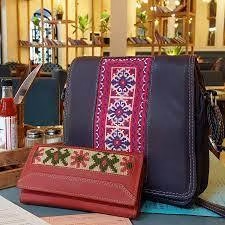
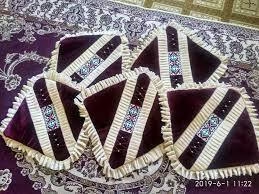
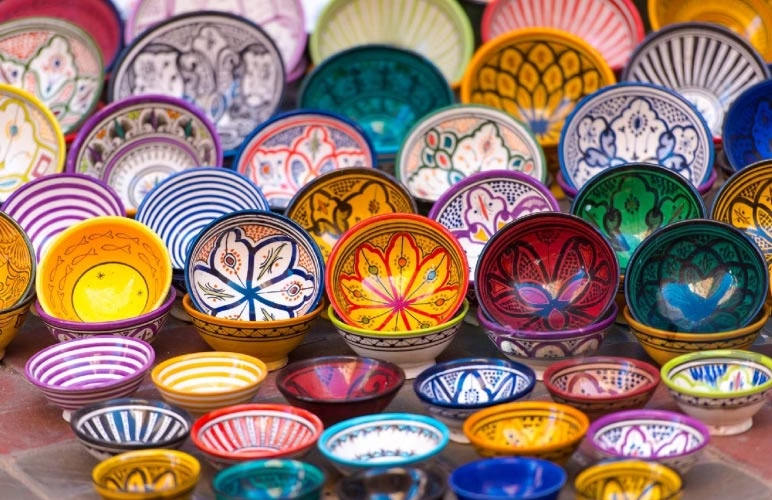
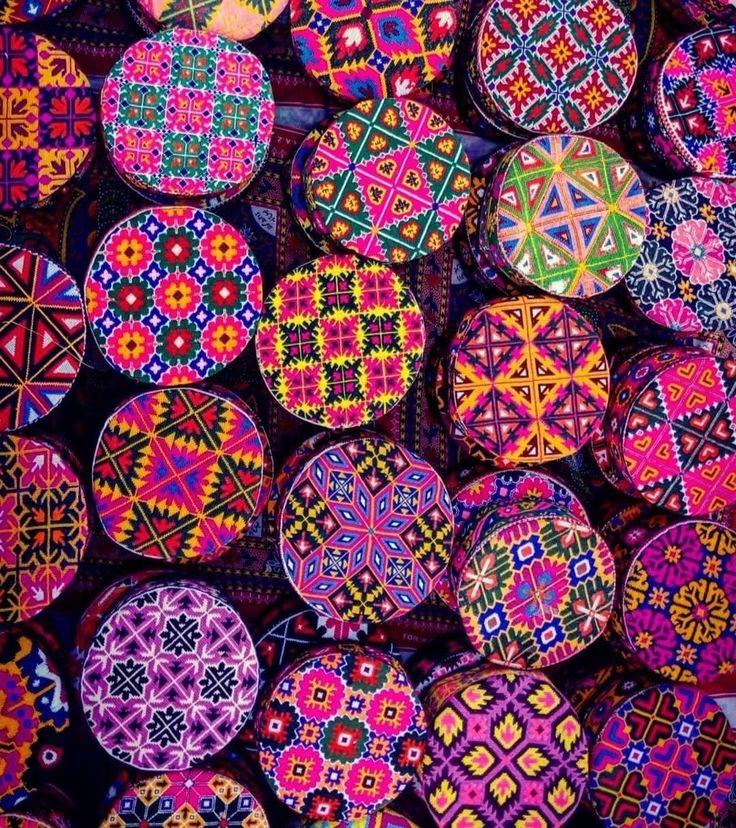
🎶 Music & Instruments
Music is an integral part of life in Gilgit-Baltistan, accompanying festivals, celebrations, and daily routines. The rhythms are distinct and often melancholic yet stirring. Popular rhythms include Alghani, Ajoli, Souse, and Dani. The traditional musical ensemble often features instruments such as the dadang (a type of drum), damal (another drum, often played with sticks), surnai (a wind instrument similar to an oboe), rabab (a lute-like string instrument), sitar (a long-necked string instrument), and the flute. The melodious tunes often tell tales of love, bravery, and the beauty of the landscape.
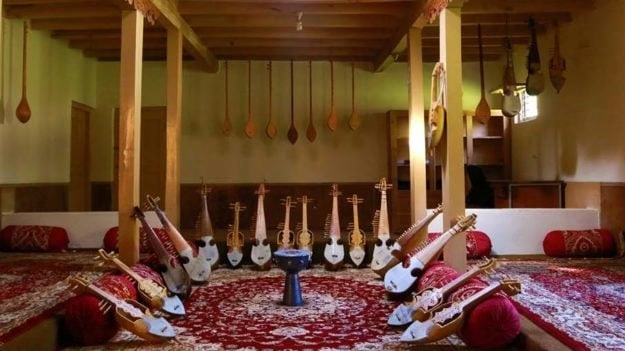
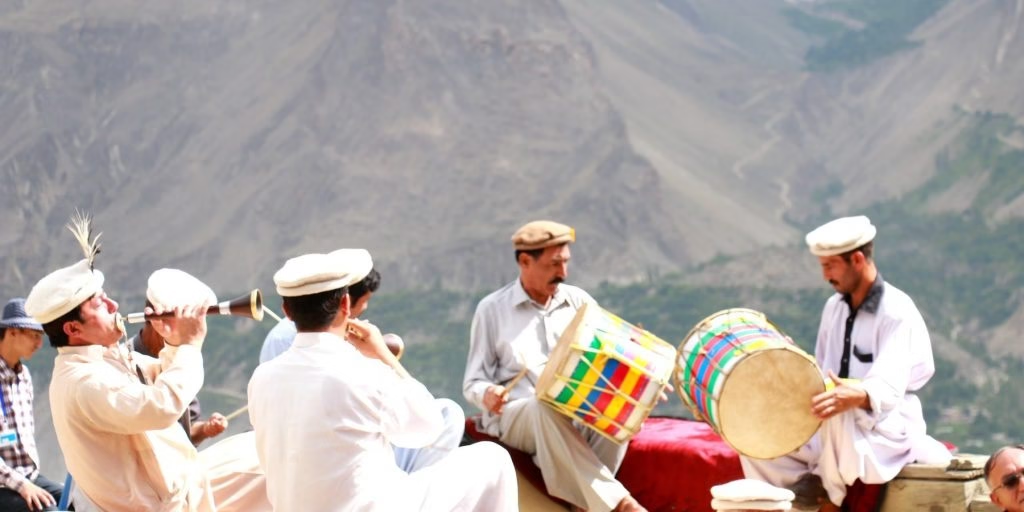
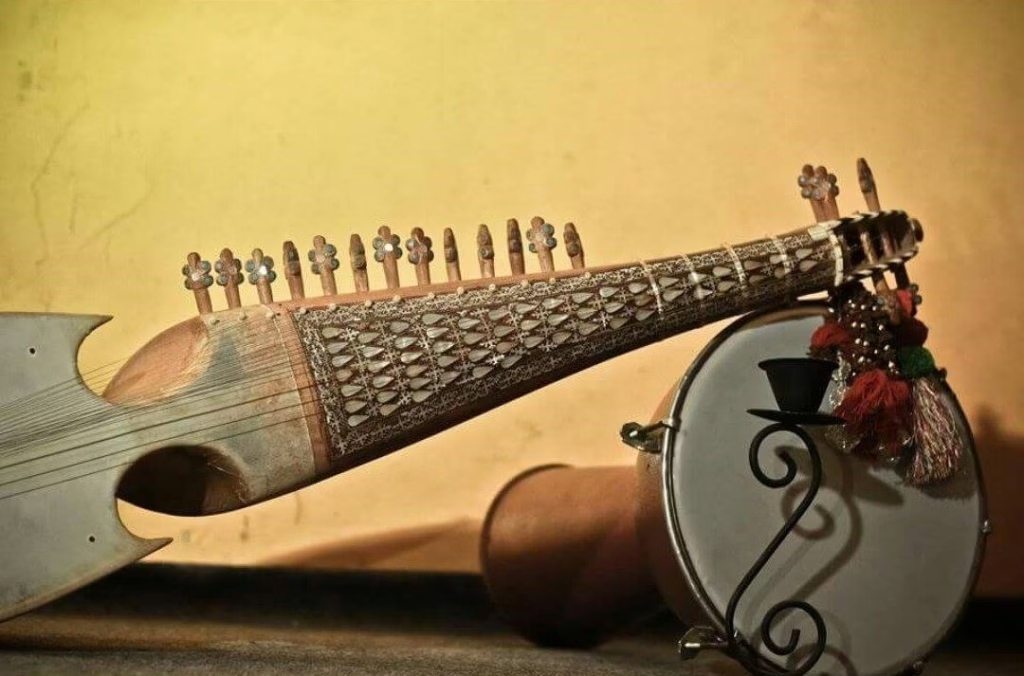
💃 Dances
Dance forms in Gilgit-Baltistan are expressive and often tell stories or celebrate historical events. The Sword Dance is a powerful and popular performance, often seen at weddings and festivals, where dancers mimic combat movements with swords and shields, accompanied by drum beats. The Old Man Dance (usually performed by younger men dressed as elders) adds a touch of humor and wisdom, while the Cowboy Dance reflects the pastoral life of some communities. Group folk performances, involving synchronized movements and traditional attire, are a staple at all major cultural gatherings.
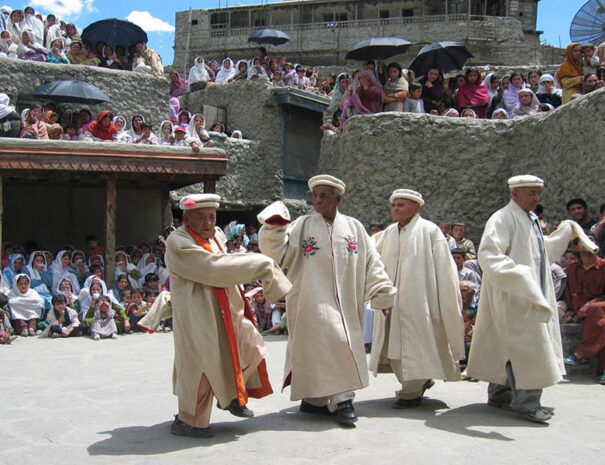

🙏 Special Traditions & Rituals: Unique Aspects of Gilgit-Baltistan Culture
Beyond the grand festivals, Gilgit-Baltistan nurtures unique rituals that reflect its deep connection to nature and community.
🧊 Glacier-Grafting (“Wedding of Glaciers”)
An ancient and fascinating practice, glacier-grafting (locally known as Buzkashi or “wedding of glaciers”) is a unique tradition primarily found in the Nagar Valley. This ritual aims to create new ice reservoirs or augment existing ones to ensure a sustainable water supply for irrigation in a region highly dependent on glacial meltwater. The ritual involves bringing together “male” and “female” pieces of glaciers (distinguished by their type of ice and debris content) and symbolically “marrying” them off with traditional rituals, prayers, and community involvement. It’s a remarkable example of indigenous ecological knowledge and communal effort in water management.
💍 Wedding Customs
Wedding customs across Gilgit-Baltistan are rich and varied, differing slightly between communities. A beautiful example is a tradition observed in the Yasin Valley. After the wedding ceremony, the bride is welcomed into the groom’s house, where she performs the symbolic act of baking roti (flatbread). The groom then joins her, symbolically helping her with the task. This ritual signifies the beginning of their shared life, their joint responsibilities, and symbolizes love, partnership, and the foundation of their new home within the community.

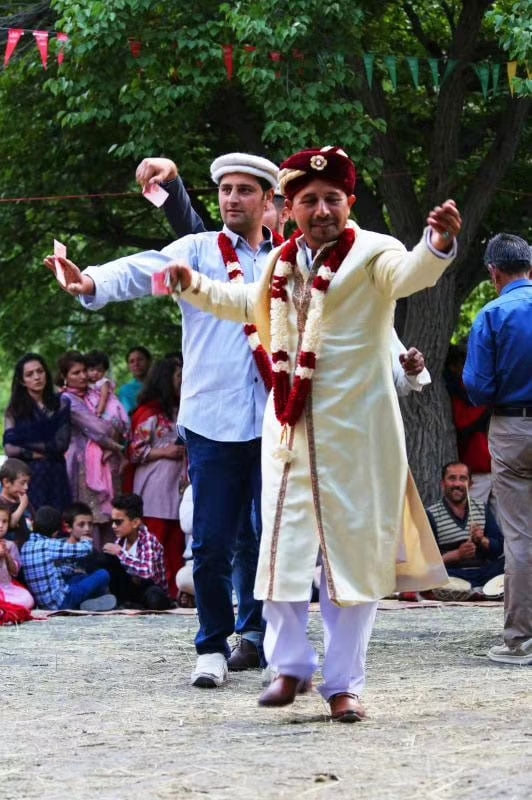
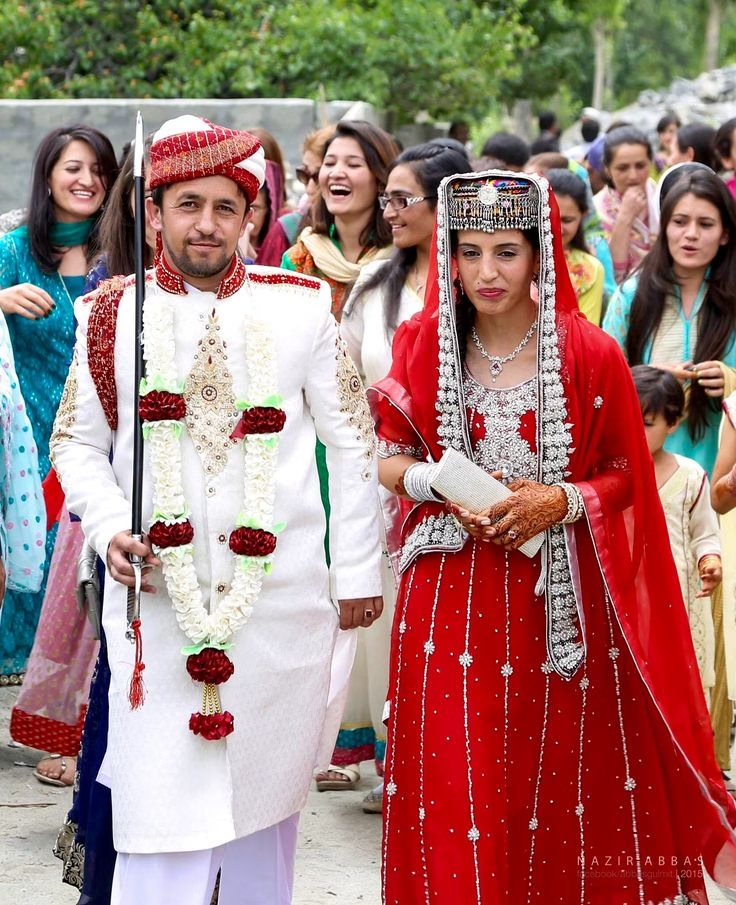
🍲 Food & Cuisine: Tastes of Gilgit-Baltistan Culture
The cuisine of Gilgit-Baltistan is hearty, flavorful, and designed to provide warmth and energy in the high-altitude environment. It often features local ingredients, including grains, fresh vegetables, and meat.
Local dishes include Chapshuro, a delicious minced meat pastry (often lamb or yak) filled with herbs and spices. Gyaling is a popular flatbread, often served with local cheeses or meat. Marzan is a nutritious dish made from a local grain (buckwheat or wheat) cooked with butter and often served with apricot oil. Balay is a comforting noodle-and-goat broth, especially popular in winter. The region is also famous for its Namkeen tea (salty tea), a unique and acquired taste for many. Prapo is a specialty often made from dried apricot paste. The dried sausages (warkì/ghittey), a direct outcome of the Nasalo meat-processing tradition, are a crucial part of the winter diet.
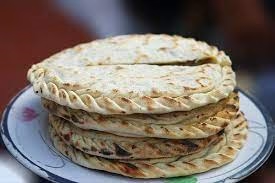
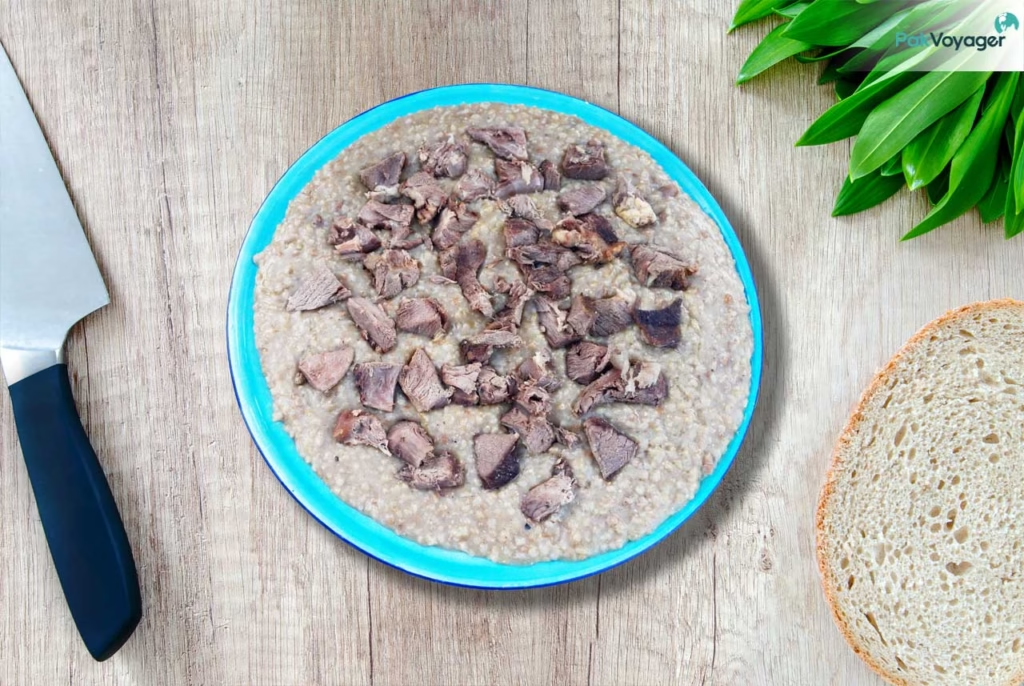
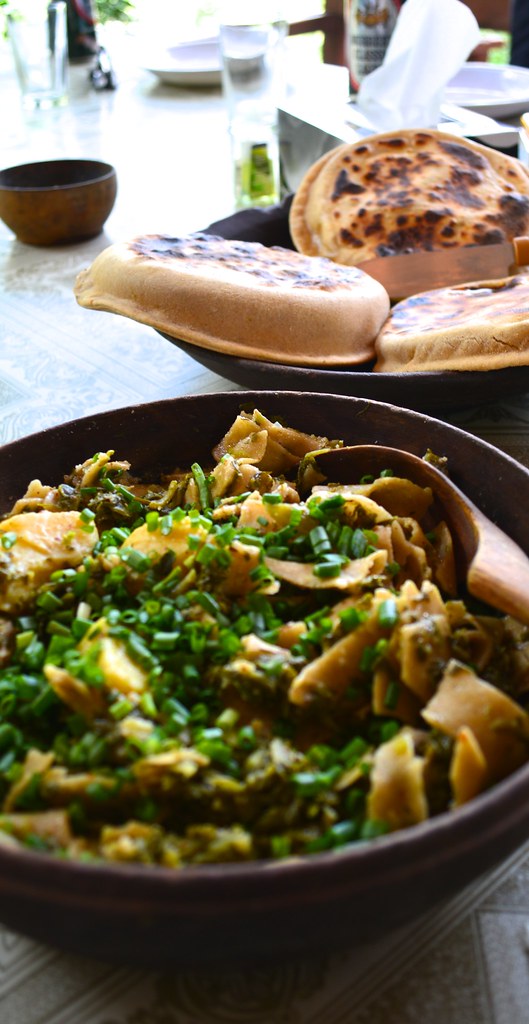
🔄 Modern Influences & Cultural Preservation: Evolving Gilgit-Baltistan Culture
Gilgit-Baltistan, like many remote regions, is experiencing the subtle yet impactful coexistence of modern influences with deeply rooted traditions. While younger generations are increasingly exposed to global trends through digital connectivity and tourism, there’s a strong underlying commitment to preserving their unique heritage.
We often see younger people blending trendy styles with traditional dress, such as wearing modern jackets over traditional shalwar-kameez or incorporating modern accessories with traditional caps. The rise of tourism has brought both economic benefits and the challenge of balancing development with cultural authenticity. However, there’s a growing awareness and effort towards cultural preservation. Local cultural councils and heritage preservation initiatives in areas like Hunza and Gilgit are actively working to document, promote, and safeguard traditional music, dance, crafts, and languages for future generations. This ensures that while Gilgit-Baltistan embraces progress, its soul remains firmly rooted in its rich past.
✅ Conclusion
The culture of Gilgit-Baltistan is a testament to the resilience, creativity, and communal spirit of its people. From the thunderous roars of the Shandur Polo Festival to the intricate patterns of a hand-woven carpet, and the ancient wisdom embedded in glacier-grafting rituals, every aspect of life here tells a story. The vibrant tapestry of festivals, the distinctive traditional attire, the soulful melodies, the unique culinary delights, and the profound customs all weave together to form an identity as unique and breathtaking as its landscape.
To appreciate Gilgit-Baltistan is to appreciate a world where tradition gracefully coexists with progress. We encourage readers to delve deeper, learn more, and perhaps even visit responsibly to experience this extraordinary cultural richness firsthand. By doing so, you contribute to the preservation of its unique identity for generations to come.